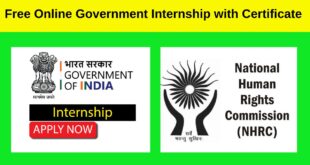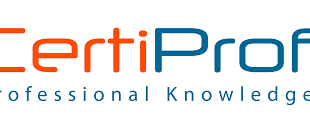Enroll Now : Certiprof Design Sprint Foundation Professional Certification
In today’s fast-paced business environment, the Design Sprint method has become an essential tool for driving rapid innovation. Our Design Sprint Professional Certification provides you with the validation needed to stand out as an expert in this problem-solving approach. This industry-recognized certification confirms your skills in planning and executing design sprints, enabling you to prototype and test solutions quickly. With this credential, you will demonstrate your ability to lead teams, foster innovation, and tackle big challenges in record time using a method proven by companies like Google Ventures.
This certification program will equip professionals from all backgrounds with the essential skills to lead and participate in Design Sprints, driving innovation and problem-solving within their organizations. No prior design or sprint experience is required, making it the perfect fit for anyone looking to break into the world of innovation and design thinking.
- Fundamentals of the Design Sprint Process
- Prototyping and Testing Solutions
- Collaborative Problem-Solving Techniques
Validate your knowledge for free and become a certified expert in Design Sprints.
Audience Profile :
- Employees across all departments and levels looking to drive innovation
- Project managers, product developers, and team leaders
- Students and career changers seeking expertise in design thinking
- Entrepreneurs and small business owners aiming to solve complex problems quickly
- Professionals who frequently collaborate on technology-driven projects
Here are the sample Quiz questions and answers :
Question 1 :The validation phase of Design Thinking is associated with which step of the Design Sprint?
Mapping, where the objective is defined.
Sketching, where the solution is elaborated.
Decision, where the most adherent solution is chosen.
Validation, where the solution is tested with real users.
Question 2 :Why use the Design Sprint for a new product?
At the end of a new project to validate your product and deliver a validated solution to the customer.
At the beginning of a new project to define your product or create a shared vision.
In the middle of a new project to deliver your product increment and validate it with the user.
At the beginning of a development to create a product vision aligned with the team.
Question 3 :What is the objective of the Decision phase of the Design Sprint?
Understand and define the problem to be solved.
Obtain information and outline solutions to solve the identified problem.
Define the most adherent solution and create a story about it.
Validate the solution and learn from user feedback.
Question 4 :The Design Sprint can be analyzed as a set of practices, processes, methods, and thoughts that emerge from:
Lean Startup, Scrum Framework, and Critical Analysis
Design Thinking, Kanban Method, and Lean Thinking
User Experience, Extreme Programming, and Exploratory Method
Design Process, Agile Philosophy, and Scientific Method
Question 5 :What is the objective of the Validation phase of the Design Sprint?
Understand and define the problem to be solved
Obtain information and outline solutions to solve the identified problem
Define the most adherent solution and create a story about it
Validate the solution and learn from user feedback
Question 6 :The short feedback loop seeks to deliver early value and obtain user feedback through:
A way to go through all the stages of Ideate, Build, Launch, and Learn in an agile way.
A way to go through none of the stages of Ideate, Build, Launch, and Learn.
A way to go from Ideate to Learn without actually building and launching the solution.
A way to go through all the steps of Plan, Execute, Control and Close in an agile way.
Question 7 :The Design Sprint can be described as:
A theoretical model for developing service, product, or problem-solving solutions based on Customer Centricity and the Kanban method.
A philosophical model for developing service, product, or problem-solving ideas based on Design Thinking and the Agile framework at scale.
A step-by-step approach to planning service, product, or problem-solving solutions based on Design Thinking and the agile framework.
A practical step-by-step approach to developing service, product, or problem-solving solutions based on Design Thinking and the agile framework.
Question 8 :The Design Sprint created by Jake Knapp and his friends consists of how many and which stages?
5 phases: Map, Sketch, Decide, Prototype, and Test
5 phases: Understanding, Divergence, Decision, Prototype, and Validation.
4 phases: Plan, Execute, Test, and Act.
4 phases: Mapping, Ideation, Prototype, and Execute.
Question 9 :Why use the Design Sprint for new ideas?
After discovering new ideas that arose in a previous process to take advantage of new findings, data, or research.
After discovering new problems that have arisen in a delivered product to develop new improvements, bugs, or technical debts.
After discovering new customer complaints that arose in a previous delivery to incorporate new findings, data, or research.
After receiving feedback on a previous product or increment, adapt it according to the findings, data, or research obtained.
Question 10 :What is the Design Sprint mainly based on?
Rapid interactions and user testing to validate an idea.
Interactions between teams and software testing to ensure quality.
Frequent interactions and user feedback to fine-tune the product.
Monthly interactions and user surveys to obtain feedback.
Question 11 :What are the main activities in the decision phase of the Design Sprint?
Adjust and refine
The battle and storyboard
Define the objective and question the experts
Validate and learn
Question 12 :How did the Design Sprint come about?
By adapting the Scrum framework to incorporate design professionals.
After several experiments to reduce the time to initiate and evaluate a solution.
When Google bought the Scrum framework.
After several months of planning and specifying a new project management model.
Question 13 :When it comes to the Design Process, try to use an approach that includes:
Process-centered (act effectively), Analytical (analyze details), and Convergent (reach consensus).
Human-centered (solve someone’s pain), Creative (develop ideas), and Divergent (explore different points of view).
Analysis (identify a problem), Design (define solutions), and Execution (implement them).
Time-centered (deliver on time), Cost reduction (do it cheaply), and Efficiency (replicate processes).
Question 14 : When using the Design Sprint method, the main objective is to:
Start from the Ideation to get the Product Approval with the users using the LMPs.
Start from the Ideation to obtain a validated Learning with the users using Prototypes.
Start from the Planning to complete the construction and deliver the final product to the users.
Start from the Execution to obtain the validated Result with the users using the Plans.
Question 15 :What are the main activities in the prototyping phase of the Design Sprint?
Tweak and refine
Rumble and Storyboard
Divide and Prototype
Validate and learn
Question 16 :What is the objective of the mapping phase of the Design Sprint?
Understand and define the problem to be solved.
Obtain information and outline solutions to solve the identified problem.
Define the most adherent solution and create a story about it.
Validate the solution and learn from user feedback.
Question 17 :If you have a clear product direction and only need dedicated project time, what is the best approach to get the expected results?
Do a Design Sprint dive
Do a Lean Inception dive
Make a discovery with Design Thinking
Align with those involved a dedication to the initiative
Question 18 :Although the Design Sprint method has a lot of potential, when is it not valid to use it?
When there is no user research and no knowledge of your customer base.
If you have a clear product direction and only need dedicated project time.
If you have no leadership involvement.
All of the above alternatives.
Question 19 :Which phrase best describes the Design Sprint?
The method developed on the basis of high investments in technology and innovation that came together to generate good results with the objective of developing solutions that are already in an advanced stage of development.
The method developed for critical scenarios in which technology and innovation cannot be used to generate good results.
The method developed in a scenario where technology and innovation came together to generate good results with the objective of testing and accelerating ideas that are still at an early stage of development.
The method of development based on technology and innovation to deliver fast results with the objective of managing activities and bringing people together at an early stage of development.
Question 20 :What are the main activities in the sketch phase of the Design Sprint?
Adjust and improve
Rumble and Storyboard
Define the objective and question the experts
Validate and learn
 Priya Dogra – Certification | Jobs | Internships
Priya Dogra – Certification | Jobs | Internships


